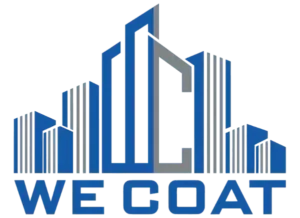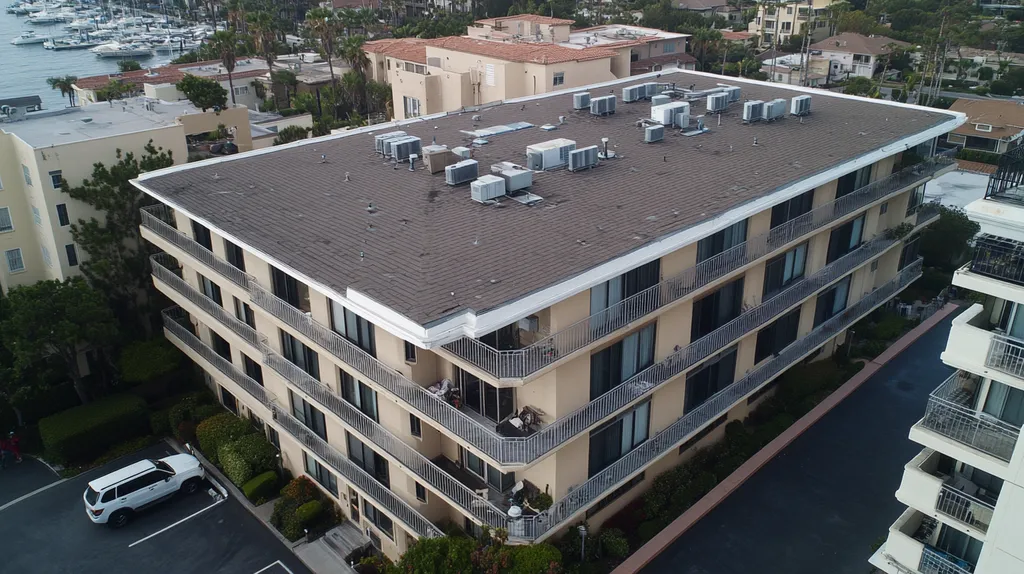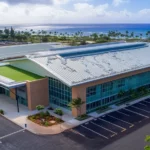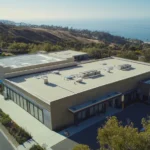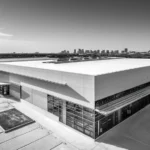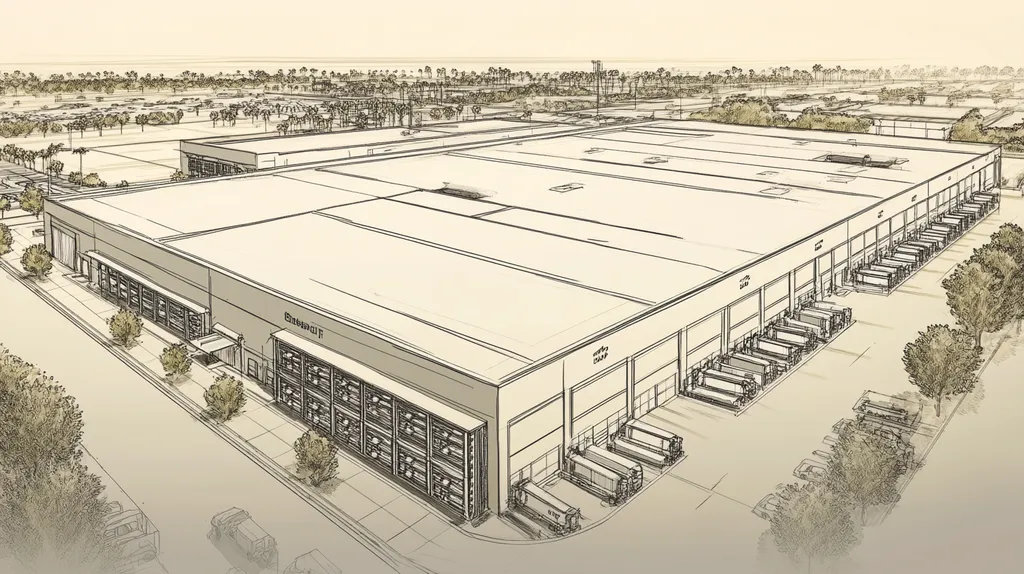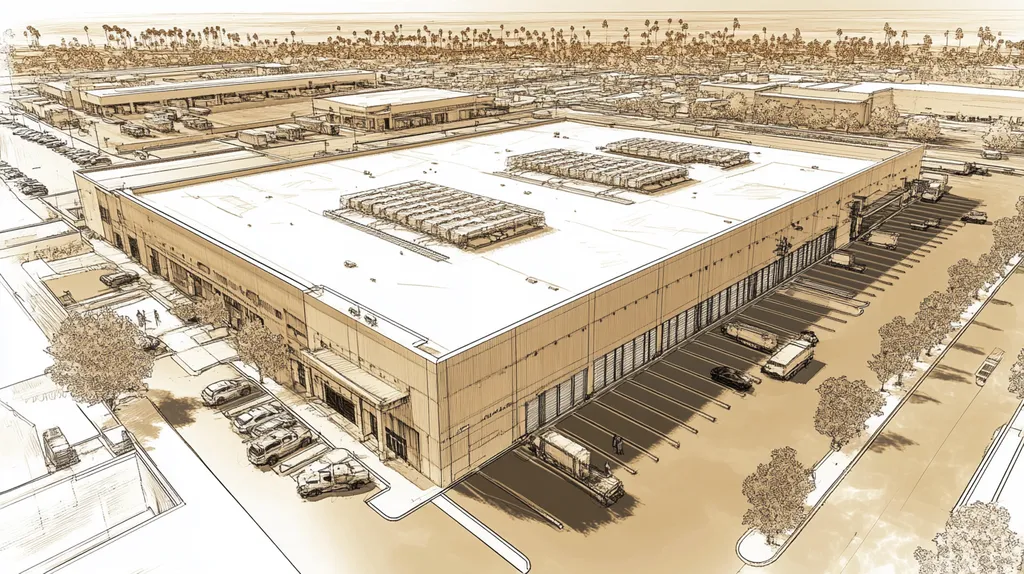Commercial property owners lose millions annually due to misconceptions about reflective roofing solutions, with the Department of Energy reporting potential energy savings of up to 20% being routinely overlooked.
As operating costs continue to rise and environmental regulations tighten, the need for evidence-based roofing decisions becomes increasingly critical for building owners and facility managers.
This analysis examines prevalent industry myths surrounding reflective roofs, providing clarity on their true costs, benefits, and performance while offering practical guidance for implementation across diverse commercial applications.
SECTION 1: COMMON MISCONCEPTIONS
Deciding on roofing materials is crucial for controlling operational costs and improving energy efficiency. However, many building owners are guided by prevalent misconceptions surrounding reflective roofing solutions. These misunderstandings can lead to poor decisions, jeopardizing long-term sustainability and financial performance. This section aims to clarify myths related to the costs, effectiveness, and general applicability of reflective roofs, equipping owners with the insights necessary for informed choices.
Reflective Roofs Are Too Expensive
A common belief among property owners is that the installation of reflective roofing materials involves an excessive financial burden. In reality, the initial investment is often offset by substantial savings over time. For large commercial spaces, energy-efficient roofs can significantly reduce cooling costs, making them a smart financial choice.
For example, research from the Cool Roof Rating Council demonstrates that reflective roofs can lower energy consumption by as much as 20%. This reduction equates to thousands of dollars in annual savings on utility bills, allowing the initial costs to be recovered within a few years.
Moreover, reflective roofing options might be eligible for tax credits or rebates offered through energy conservation programs. Such incentives help further bridge the gap between upfront expenses and long-term savings.
Ignoring the overall financial benefits of reflective roofs in favor of initial costs can lead property owners to underestimate their return on investment. A comprehensive budget should take into account the long-term economic advantages reflective roofing can offer.
All Reflective Coatings Are the Same
Another prevalent misconception is that all reflective coatings provide identical performance levels. This assumption can lead to poor purchasing decisions that fail to maximize energy efficiency and durability. The reality is that various types of reflective coatings exhibit different properties and levels of effectiveness.
Some coatings reflect a higher percentage of sunlight than others and are better suited for specific conditions. For example, elastomeric coatings offer superior flexibility and durability compared to basic acrylic options, potentially extending the lifespan and performance of the roofing system.
Additionally, there is a lack of uniform industry standards for reflective coatings. Building owners should always consider the Solar Reflectance and Thermal Emittance ratings to confirm that the selected product aligns with specific energy efficiency goals.
Understanding the differences among reflective coatings empowers property owners to make well-informed decisions. This knowledge leads to better investment choices, ensuring that the roofing solution fits the unique needs of their property.
Reflective Roofs Only Benefit Hot Climates
Some property owners mistakenly think that the advantages of reflective roofs are restricted to hot climates. This perception can result in missed opportunities for energy savings in moderate and cooler regions. Reflective roofs provide climate-resilient benefits that apply across different environments.
Research indicates that reflective roofs can effectively mitigate the heat island effect, even in cooler climates. By maintaining stable roof temperatures, these materials also protect against thermal shock, which can prolong the roof’s lifespan.
In mixed climates, reflective roofs can continue to deliver benefits: they keep buildings cooler in the summer while assisting in heat retention during the winter. This balance can contribute to enhanced energy efficiency throughout the year.
Dismissing reflective roofs based on geographic location can prevent building owners from realizing the full range of energy savings and performance benefits. It is essential to evaluate roofing options based on the specific needs of the building, not merely assumptions about the climate.
SECTION 2: PRACTICAL IMPLICATIONS
The choice of roofing materials carries immense weight, influencing energy efficiency, building durability, and the comfort of occupants. The U.S. Department of Energy states that reflective roofs can reduce energy costs by as much as 20%. This is particularly relevant for property owners faced with escalating operational costs. By understanding these practical implications, decision-makers can opt for solutions that optimize energy efficiency while ensuring longer roof life. This section delves into how reflective roofs impact HVAC systems, roof longevity, and indoor thermal comfort.
Impact on HVAC Systems and Energy Consumption
Reflective roofing systems significantly minimize heat absorption, resulting in cooler roof temperatures. This reduction directly contributes to enhanced HVAC efficiency, enabling systems to operate less frequently. A cooler roof lowers the overall cooling load, leading to decreased energy consumption and costs.
For instance, commercial buildings with reflective roofs can substantially lessen air conditioning demands, a vital consideration in regions with extended, sweltering summers. A reduction in cooling requirements can substantially lower operational expenses, directly affecting the bottom line.
Moreover, improved HVAC efficiency prolongs equipment lifespan. When systems are not overworked, they require fewer repairs and replacements, translating into further savings for property owners over time.
Incorporating reflective solutions is more than an operational choice; it is a strategic financial decision that delivers enduring benefits in energy cost savings and equipment efficiency.
Effects on Roof Lifespan and Maintenance
Reflective roofing materials are engineered to resist extreme temperatures and varied weather conditions, which can enhance the lifespan of a roof. By reducing thermal stress, these solutions minimize the expansion and contraction cycles that often result in cracking and degradation.
This advantage means property owners are likely to experience fewer repairs and longer intervals between roof replacements, yielding significant savings. Studies indicate that a well-maintained reflective roof can last up to 20% longer than traditional roofing systems.
Additionally, routine maintenance requirements are ameliorated with reflective roofs. These materials typically show less wear and necessitate fewer inspections and repairs compared to their conventional counterparts. Consequently, this results in reduced labor costs for property management teams.
Thus, selecting reflective roofing solutions is a proactive strategy that not only enhances roof durability but also streamlines maintenance efforts.
Influence on Indoor Thermal Comfort
Indoor thermal comfort is vital for the productivity and overall satisfaction of building occupants. Reflective roofing solutions contribute to stable indoor temperatures by curtailing heat gain in warmer months.
Lower roof temperatures substantially decrease the amount of heat transferred into the building, creating a more consistent climate. This ensures enhanced comfort for both employees and visitors, an essential factor in any commercial setting.
In fact, comfortable indoor environments are associated with increased productivity levels. Research shows that optimal indoor temperatures play a crucial role in employee efficiency and satisfaction, making reflective roofs not just an architectural improvement but also a smart business investment.
By addressing indoor thermal comfort through reflective roofing, property owners can reduce heating and cooling expenses, benefiting their bottom line. Therefore, the selection of roofing materials should be seen as an opportunity to enhance the occupant experience while driving enduring financial rewards.
SECTION 3: COST OF MISINFORMATION
Misinformation can have serious financial implications for property owners, particularly regarding roofing decisions. Recent studies indicate that energy inefficiencies can drive operational costs up by as much as 30%. Misguided beliefs about traditional roofing systems may cause property owners to overlook the significant cost-saving potential of reflective roofing options. Recognizing these misconceptions is essential to avoid costly mistakes.
Financial Consequences of Inefficient Roofing
Many property owners fail to grasp the full financial impact of inefficient roofing systems. Poor insulation or outdated materials contribute to soaring energy bills. For instance, a commercial building that features a non-reflective roof could incur thousands of dollars each year solely on air conditioning costs.
In contrast, adopting reflective roofing materials can yield substantial reductions in both heating and cooling expenses. Buildings designed to reflect rather than absorb heat can decrease energy consumption by 20% or more, enabling significant savings that affect the overall budget positively.
Moreover, neglecting the inefficiencies of a old roof often leads to expensive repairs. Issues like water damage, mold, and structural concerns may arise from ignored roofing problems. The cumulative financial burden frequently surpasses the initial investment in a reflective roofing system.
Inevitably, overlooking the benefits of reflective roofing can jeopardize financial health and lead to increased operational expenses. Access to accurate information is vital for ensuring the sustainability of commercial property investments.
Hidden Costs of Premature Roof Replacement
Property owners frequently fall prey to the misconception that aging roofs necessitate immediate replacement. However, this belief often conceals hidden costs. Premature replacements frequently overlook maintenance options, such as upgrading to a reflective roof that extends a roof’s useful life.
For example, applying a reflective coating can revitalize an aging roof while delaying the need for complete replacement. This cost-effective strategy can yield years of additional service, conserving both time and financial resources. Failing to explore such alternatives can lead to unnecessary financial burdens.
Furthermore, frequent roof replacements can disrupt business activities. Such disruptions may result in lost revenue and diminished productivity during the transition. Property owners may overlook opportunities for efficiency upgrades by not considering reflective roofing options.
To mitigate these hidden costs, thorough research and professional consultation are crucial. Engaging specialists can empower property owners to make informed decisions regarding roofing options, maximizing their investment potential.
Opportunity Costs of Missed Energy Savings
By choosing not to invest in reflective roofing, property owners forfeit considerable energy savings. Increased energy demand stemming from heat absorption can escalate operational costs. Buildings that incorporate reflective technologies often experience reduced demands on heating and cooling systems, ultimately lowering costs.
A report from the Department of Energy reveals that reflective roofs naturally cool buildings, resulting in marked reductions in energy usage. This operational efficiency not only saves money but also contributes to a reduced carbon footprint.
Additionally, energy inefficiencies can detract from property values. Buildings that incur high operating costs may be less attractive to potential buyers or tenants. Therefore, failing to implement reflective roofing measures can jeopardize long-term asset value.
In summary, the opportunity costs associated with disregarding reflective roofing are significant. Property owners must reassess their roofing strategies to ensure they avoid both direct financial losses and decreases in property value.
SECTION 4: REALITY CHECK
As energy costs continue to escalate, property owners feel the urgent need to identify effective strategies for reducing operating expenses. Reflective coatings are frequently promoted as a viable solution, yet misconceptions about their functionality and advantages persist. This section clarifies how reflective coatings work, presents real-world examples demonstrating energy savings, and assesses the climate-specific benefits and challenges associated with their use.
How Reflective Coatings Actually Work
Reflective coatings achieve their primary function by reflecting a substantial percentage of sunlight away from the roof surface. By minimizing heat absorption, they help maintain cooler indoor temperatures and lessen reliance on air conditioning systems. As a result, buildings employ significantly less energy for cooling, which translates to lower energy bills.
Typically, these coatings are applied over existing roofing materials and can be effectively utilized across various surfaces. Their performance is particularly pronounced in regions that experience intense sunlight. Ensuring proper application and regular maintenance is crucial to maximizing their longevity and effectiveness, making them a wise investment.
When selecting a reflective coating, property owners should pay attention to the reflectivity values, which can vary based on factors such as color and composition. Choosing high-quality products and hiring experienced contractors are essential steps for achieving optimal performance.
By understanding the science behind reflective coatings, property owners and facilities managers gain the knowledge needed to make informed choices. Recognizing how these coatings function is crucial for adopting energy-efficient roofing solutions.
Real-World Examples of Energy Savings
Multiple studies have underscored the significant energy savings obtainable through reflective roofing solutions. A prime example is a commercial complex in Los Angeles, which reported a remarkable 30% reduction in cooling costs following the installation of a reflective roof coating, leading to annual savings amounting to thousands of dollars.
Another case involves a manufacturing facility in Texas that experienced a 27% reduction in energy consumption, which corresponded to notable decreases in greenhouse gas emissions. These compelling examples showcase that reflective coatings can deliver both substantial financial savings and environmental benefits.
Data indicates that the payback period for these systems can be as short as five years, demonstrating that while the initial investment may appear high, the long-term savings frequently offset those costs, establishing reflective coatings as an appealing option for various types of properties.
Ultimately, the evidence consolidates that incorporating reflective coatings is not just advantageous; it is increasingly necessary for property owners seeking enhanced energy efficiency and reduced operational costs.
Climate-Specific Benefits and Challenges
Reflective coatings excel in hot, sunny climates by significantly lowering indoor temperatures, which results in improved thermal comfort and reduced energy bills. For buildings situated in regions with high solar exposure, such coatings can become indispensable for effective energy management.
However, challenges arise in colder climates, where reflective coatings may hinder natural heat retention, leading to escalated heating costs. This reality underscores the importance of careful consideration before implementation.
Moreover, property owners must assess the durability of the coatings in the face of harsh weather conditions. Factors such as heavy rainfall, hail, or snow can impact performance and longevity, necessitating regular maintenance and proactive inspections.
By evaluating specific climate-related factors, property owners can optimize the effectiveness of reflective coatings while minimizing potential challenges. This tailored approach aids in striking an ideal balance between performance, durability, and energy savings.
SECTION 5: EVIDENCE-BASED ALTERNATIVES
The choice of roofing material is pivotal for commercial property owners. Selecting the right reflective roofing option can not only dramatically lower energy costs but also extend the lifespan of the roof itself. By gaining a firm grasp on the types of materials available and examining proven case studies, property owners can ensure decisions that positively affect their facility’s bottom line. This section delves into the diverse types of reflective roofing materials, highlights successful implementations, and discusses compliance with demanding energy efficiency standards.
Types of Reflective Roofing Materials Available
Reflective roofing materials are available in a diverse range, each offering unique advantages. One standout option is white elastomeric coatings, known for their ability to reduce heat absorption while providing excellent moisture resistance. Reflective TPO (Thermoplastic Olefin) membranes are another popular choice, celebrated for their energy efficiency and durability.
Metal roofing systems, often enhanced with reflective coatings, also serve as effective solutions. These not only repel solar radiation but also boast longevity. An innovative addition to the market, cool roofs, can be composed of varied materials while adhering to specific reflectivity and emissivity standards.
By utilizing these advanced materials, building owners can achieve significant cost savings through reduced cooling demands. Furthermore, reflective roofs play an essential role in mitigating the urban heat island effect, consequently benefiting the surrounding community.
Case Studies of Successful Implementations
Numerous high-profile projects provide compelling evidence of the benefits associated with reflective roofing solutions. A notable example involves a large distribution center in California that implemented TPO roofing, leading to a remarkable 25% reduction in energy costs within just the first year. Such substantial savings directly influenced their operational budgets.
Additionally, a school district in Texas transitioned to a white elastomeric roof system, leading to decreased air conditioning costs and improved indoor comfort levels. This transition not only enhanced the learning environment but also delivered notable financial benefits.
These case studies illustrate the efficacy of reflective roofing materials. Through meticulous selection and implementation, property managers can realize not just energy savings, but also enhanced long-term performance.
Compliance with Energy Efficiency Standards
Adhering to energy efficiency standards is imperative for commercial properties. Reflective roofing materials frequently exceed the requirements set forth by programs such as ENERGY STAR. Gaining certification can yield advantages, including tax benefits and heightened marketability for properties.
Moreover, local building codes increasingly stipulate energy efficiency measures for new roofs. By selecting compliant reflective options, property owners can not only avoid regulatory penalties but also enhance the value of their properties.
Furthermore, organizations emphasizing sustainable building practices are prioritizing energy-efficient roofs. Aligning with these standards not only improves the property’s reputation but also attracts tenants who value environmental responsibility.
SECTION 6: TEST AND VERIFY
Investing in a commercial roof is a critical decision that can profoundly affect operating costs and energy efficiency. The U.S. Department of Energy states that reflective roofs can reduce cooling energy use by up to 20%. To maximize these benefits, property owners and facility managers must prioritize rigorous testing and verification processes. This section explores vital practices such as conducting thorough roof inspections, measuring energy savings, and ensuring proper installation and maintenance.
Conducting Roof Inspections and Assessments
Regular inspections and assessments are essential for maintaining the longevity and effectiveness of reflective roofing systems. These evaluations should examine the roof’s overall condition, such as surface integrity and signs of wear. Identifying minor issues early can save property owners from incurring costly repairs later on.
Inspection reports must include critical data on surface reflectance and insulation performance, enabling property owners to evaluate whether the roof is preserving its energy-efficient qualities over time. Failing to conduct routine checks can result in unnoticed problems that diminish performance and inflate energy costs.
Utilizing advanced tools like infrared thermography can offer valuable insights into heat retention and energy efficiency. This technology can pinpoint areas that may be leaking heat, allowing for targeted repairs. Proactive assessments empower property owners to make informed decisions regarding maintenance and potential replacements.
By establishing a structured inspection schedule, property owners can ensure that their roofs not only meet industry standards but also operate at peak capacity. Regular inspections represent an investment in a healthier building and increased energy savings.
Measuring Energy Savings and ROI
Evaluating energy savings and return on investment (ROI) is crucial for determining the effectiveness of reflective roofing solutions. Property owners should employ energy models that consider local climate conditions, building usage, and insulation types to establish a baseline for comparison of energy consumption before and after installation.
Industry standards advocate for measuring the solar reflectance index (SRI) of reflective roofing materials. Elevated SRI values correlate with reduced roof surface temperatures, which in turn lead to a decrease in energy consumption for cooling purposes. Monitoring this metric allows property owners to quantify their energy savings over time.
Analyzing energy bills serves as a practical approach to assessing post-installation savings. Property owners should consistently review energy expenditures and compare them to historical data. Recorded savings present compelling evidence of the benefits derived from investing in reflective roofing.
Additionally, potential ROI can be improved through local, state, or federal incentives designed to promote energy-efficient construction. Staying informed about available financing or rebate programs can significantly alleviate initial costs, further legitimizing the decision to adopt reflective solutions.
Ensuring Proper Installation and Maintenance
Proper installation is arguably the most critical factor in ensuring the durability and efficiency of reflective roofs. Hiring professional contractors who specialize in reflective roofing is essential for adhering to industry best practices and standards. Poor installation can lead to premature roof failure, undermining the intended energy efficiency.
Moreover, ongoing maintenance significantly influences the roof’s performance. Regular cleaning to eliminate debris is crucial for maintaining the reflective properties of the roof. Accumulations of dirt and grime can reduce reflectivity, leading to increased energy costs and decreased comfort levels indoors.
Property owners should establish a maintenance plan that includes both routine cleaning and timely repairs. This plan should consider the specific materials used and environmental challenges. Promptly addressing minor repairs can prevent more significant issues, thereby safeguarding the initial investment.
Integrating regular maintenance checks with inspections creates a holistic strategy for managing reflective roofs. This approach ensures sustained energy efficiency while enhancing the property’s overall value, making meticulous installation and ongoing care vital for achieving long-term success.
The Bottom Line
With commercial buildings losing up to 30% of their cooling and heating energy through inefficient roofing systems, the cost of inaction on reflective solutions continues to mount.
Studies consistently demonstrate that reflective roofing technologies can reduce energy consumption by 15-25% while extending roof life by up to two decades.
As energy costs rise and environmental regulations tighten, property owners who fail to implement proven reflective solutions risk significant financial consequences and decreased property values.
The evidence is clear: reflective roofing solutions, when properly selected and installed, deliver measurable returns through reduced operating costs, extended roof lifespans, and improved occupant comfort.
For commercial property owners seeking to maximize their assets’ performance and value, reflective roofing solutions have evolved from an optional upgrade to an essential investment.
FREQUENTLY ASKED QUESTIONS
Q. Are commercial roofs with reflective solutions too expensive?
A. Many property owners believe the costs are excessive, yet initial investments can lead to significant savings over time. Energy-efficient roofs can reduce cooling expenses by as much as 20%, recovering initial costs within a few years. Available tax credits and rebates further enhance the financial appeal.
Q. How do reflective roofs affect HVAC systems?
A. Reflective roofing minimizes heat absorption, leading to cooler roof temperatures. This reduction allows HVAC systems to operate more efficiently, decreasing overall energy consumption and costs. In regions with long summer months, the impact on cooling demands can significantly lower operational expenses.
Q. What are the financial consequences of inefficient roofing?
A. Inefficient roofing systems can lead to increased energy costs due to poor insulation and outdated materials. Buildings with non-reflective roofs may face high air conditioning expenses, while adopting reflective options can result in significant heating and cooling savings.
Q. How do reflective coatings work?
A. Reflective coatings function by reflecting sunlight away from the roof surface, reducing heat absorption. This process helps maintain cooler indoor temperatures and decreases reliance on air conditioning, thereby lowering energy consumption and utility costs over time.
Q. What types of reflective roofing materials are available?
A. Various reflective roofing materials include white elastomeric coatings, reflective TPO membranes, and enhanced metal roofing systems. Each type offers unique advantages in terms of energy efficiency, durability, and moisture resistance while contributing to reduced cooling costs for buildings.
Q. How can property owners ensure proper installation of reflective roofs?
A. Engaging professional contractors who specialize in reflective roofing is critical for ensuring proper installation. Furthermore, property owners should prioritize regular maintenance and inspections, including cleaning to maintain reflectivity, to enhance roof durability and energy efficiency.
Q. Can reflective roofs be beneficial in colder climates?
A. Reflective roofs offer benefits even in cooler climates by reducing heat gain in summer and aiding thermal retention in winter. Property owners should evaluate the specific needs and potential energy savings for their region to maximize benefits from reflective roofing solutions.
